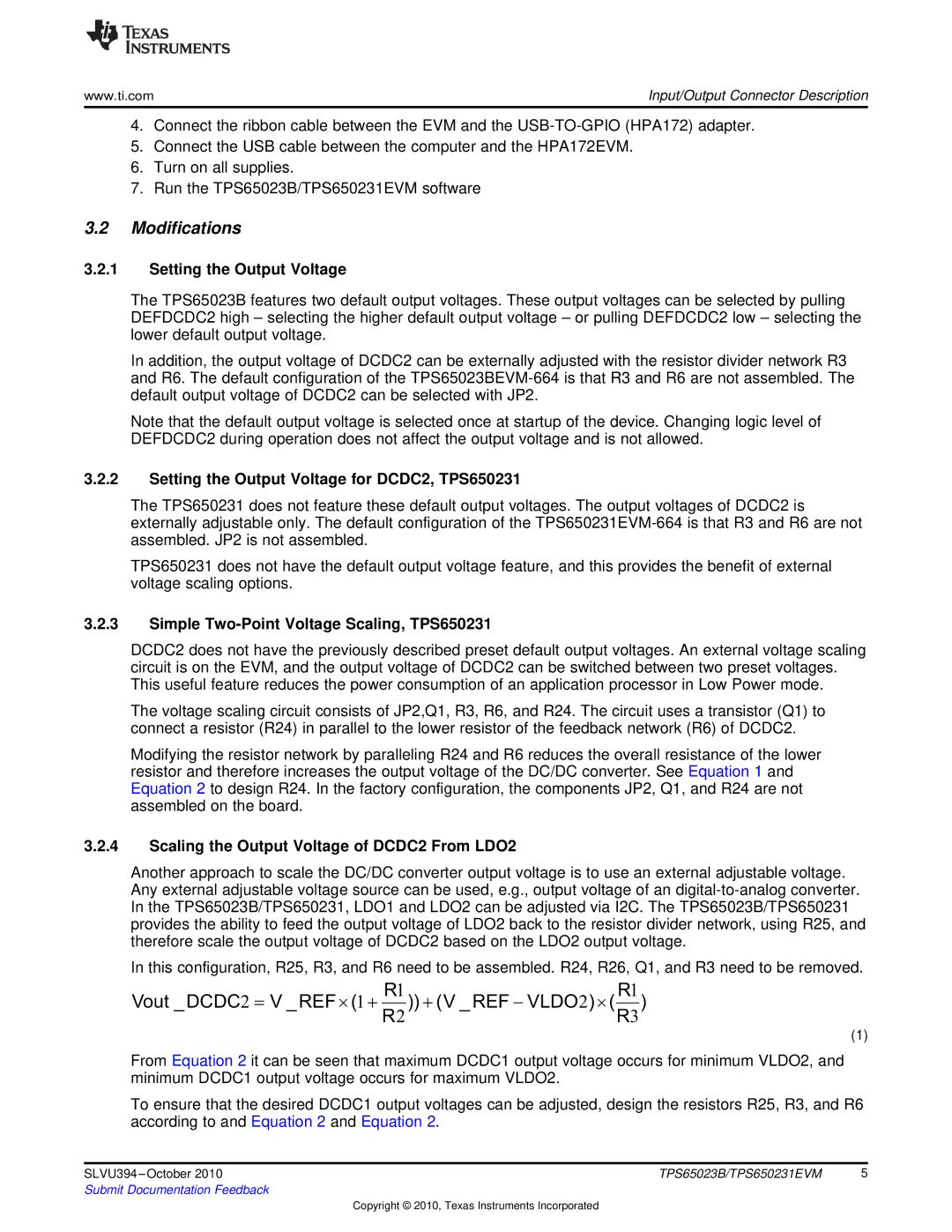TPS65023B, TPS650231EVM specifications
Texas Instruments has a reputation for producing high-quality power management solutions, and the TPS650231EVM and TPS65023B are perfect examples of this. These advanced power management modules are designed for efficient power delivery in various applications, including portable devices and embedded systems.The TPS650231EVM is an evaluation module developed to facilitate the evaluation of the TPS65023B power management IC. This device is specifically engineered to deliver power to processors that require multiple outputs from a single power source. The TPS65023B integrates several key features that make it a robust choice for designers aiming to simplify their power management requirements.
One of the main highlights of the TPS65023B is its dual buck converter. This converter can efficiently convert the input voltage into multiple output voltages, specifically optimized for powering processors and other system components. The device supports adjustable output voltages, allowing developers to tune the system to meet the exact power needs of their applications. With an input voltage range of 2.5V to 5.5V, the TPS65023B can accommodate diverse power input requirements.
Another key technology incorporated in the TPS65023B is the ultra-low quiescent current specification, which helps extend battery life in portable applications. This is particularly important in battery-powered devices, where optimization of power consumption is critical. The device also incorporates various protection features, including thermal shutdown, over-voltage protection, and short-circuit protection, ensuring reliable operation under various conditions.
The TPS65023B features a small footprint, making it ideal for space-constrained designs. The integration of multiple power management functions into a single device not only saves board space but also simplifies the design process, allowing engineers to focus on other critical aspects of their applications.
In addition to its technical specifications, the TPS650231EVM provides a user-friendly platform for evaluating the performance of the TPS65023B. This evaluation module includes necessary components and design considerations, enabling developers to quickly assess the device's capabilities within their systems.
In summary, the Texas Instruments TPS650231EVM and TPS65023B offer cutting-edge features, advanced technology, and robust performance. Their versatility and efficiency make them highly suitable for a range of applications, helping engineers achieve their design goals while maximizing power efficiency and reliability.

